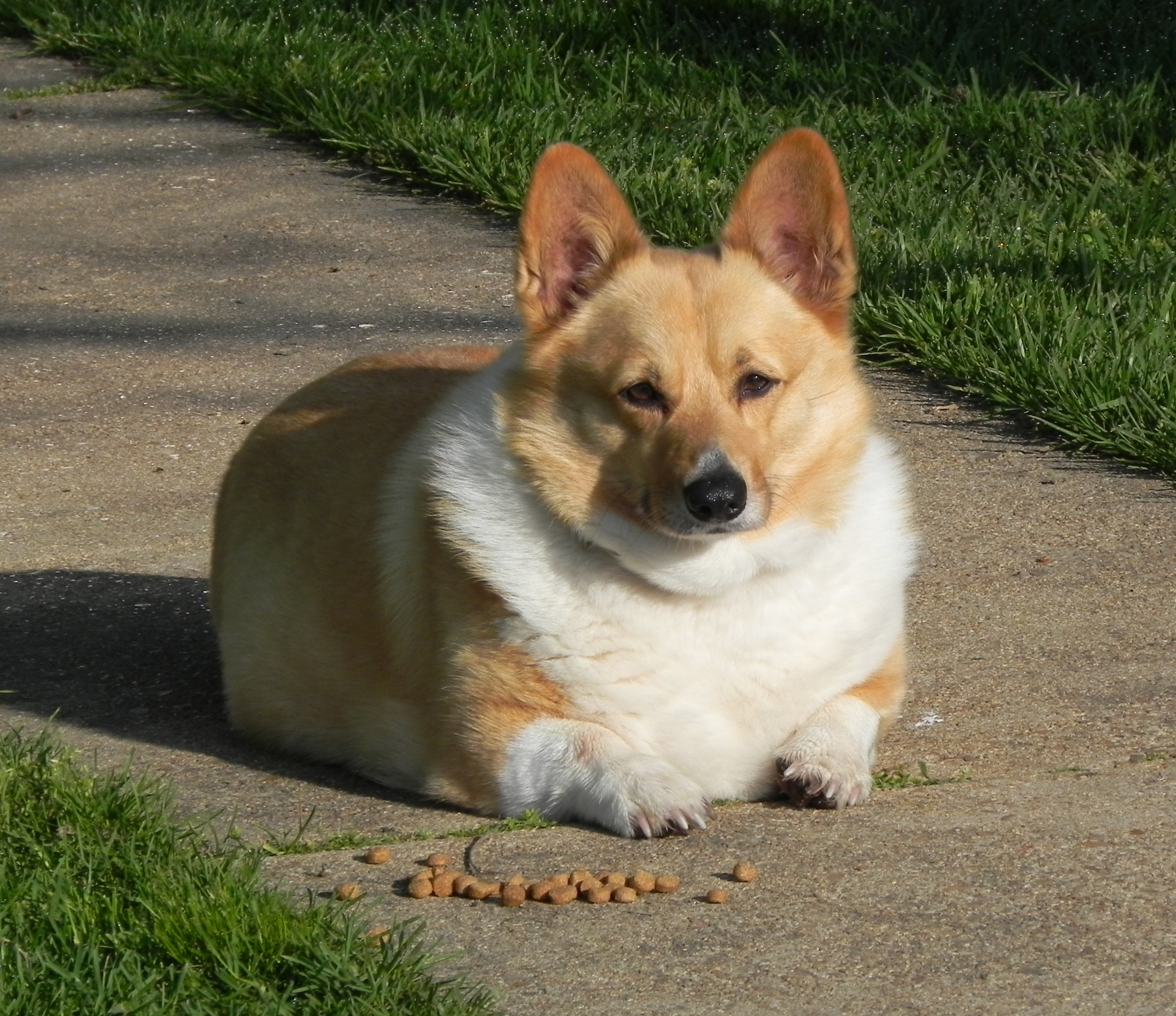Description

There are two breeds of Welsh corgis, the Cardigan and the Pembroke, each named for the county in Wales where it originated. The two breeds were recognized as one breed until 1934 when the Kennel Club recognized them as Pembroke and Cardigan. The differences between the two breeds include bone structure, body length, and size. Cardigans are the larger of the two breeds, with large rounded ears and a 12-inch-long foxy, flowing tail set in line with the body. Though the Cardigan is allowed more colours than the Pembroke, white should not predominate in its coat. The Cardigan is a double-coated dog where the outer coat is dense, slightly harsh in texture, and of medium length. The dog's undercoat is short, soft, and thick. The breed stands about 12 inches (30 cm) at the shoulder, and weighs about 30 pounds (14 kg). The Cardigan is sturdy, mobile, alert, active, intelligent, steady, and neither shy nor aggressive.
Pembrokes feature pointed ears, and are somewhat smaller in stature than the Cardigan. Considered a practical dog, they are low-set, intelligent, strong and sturdy with stamina sufficient to work a day on the farm. The dog's head is fox-like and the tail short, which can be accomplished through breeding or docking. Historically, the Pembroke was a breed with a natural bob tail (a very short tail), and today, if the Pembroke has a tail at all, it is usually curly. Due to the advent of tail docking in dogs, the bob tail was not aggressively pursued, with breeders focusing instead on other characteristics, and the tail artificially shortened if need be. Given that some countries now ban docking, breeders are again attempting to select dogs with the genes for natural bob tails. Pembrokes stand from 10 inches (25 cm) to 12 inches (30 cm), and weigh approximately 28 pounds (13 kg).
Corgis are herding dogs, and perform their duties by nipping at the heels; the dog's low height allows it to avoid being kicked in the process. As herding dogs, corgis work livestock differently than other breeds. Instead of gathering the cattle the way a collie would, by running around the livestock, corgis drive the herd forward by nipping at their heels and working them from behind in semicircles. Seldom giving ground, if an animal should turn and charge, the corgi will bite its nose, causing it to turn and rejoin the herd.[3] Although they specialize in herding cattle, corgis are also used to herd sheep and Welsh ponies. Welsh corgis also guarded children and were pets.

